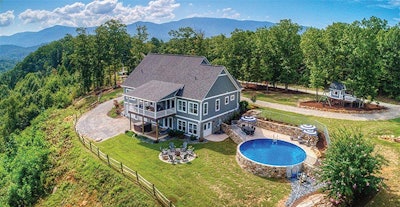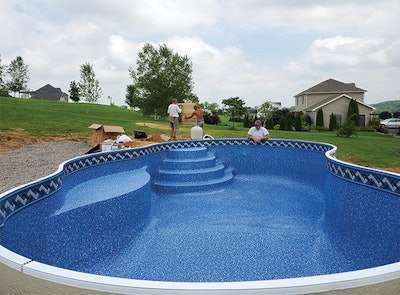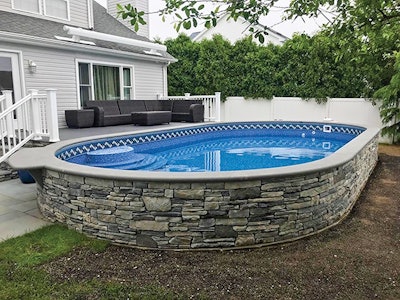
Van Dorn Pools & Spas in Kingsville, Md., has been in business since 1954 serving pool customers in the greater Baltimore area. The company has a retail operation and sells hot tubs and swim spas, but for most of its history, the primary focus has been on installing aboveground pools.
While the abovegrounds have been a mainstay for decades, sales manager Marty Spears notes that the rolled- steel construction concept inherent in the product does come with some significant limitations. "It's not made to go in the ground," he says. "If it does, it will rust."
Working strictly aboveground has created challenges for the company, especially when situating the pools on sloped properties. "We used to build these elaborate decks around the high side of those pools," Spears explains. "But the price of materials for decks increased, and it was out of the price range for a lot of homeowners."
RELATED: The Semi-Inground Model Opens A New Market
The limitations of the abovegrounds prompted the company to look to inground and semi-inground pools as a solution — a move that has expanded the universe of pool possibilities and the range of customers Van Dorn Pools can serve.
Joel Compton, president of C&C Pools in Jacksonville, Fla., experienced a similar evolution in his business — that is, starting with abovegrounds and then exploring subgrade alternatives.

All photos courtesy of Radiant Pools
"The big problem," Compton explains, "is that here in the Jacksonville area, the ground is always wet. So, there is no way you can install the rolled-steel in the ground."
In both cases, the desire to contend with slope and groundwater issues led these experienced installers into a broader spectrum of design possibilities they had not previously explored. While the affordability and convenience of the traditional aboveground products still appeal to a large number of customers who accept being limited to round and oval pools, the inground and semi-inground market offer a comprehensive line that appeals to a wider market.
This, along with the growing ability of package pools to mimic the curves and radii that were previously the exclusive province of gunite pools, has been a game changer.
It has led to an entirely new type of dialogue with clients, Spears says. "The freeform ability really changes things. Now, we have the ability to provide a freeform pool that starts to feel more like a backyard oasis, having the style and curvature, which is not what you traditionally would associate with an aboveground or semi-inground pool."

All photos courtesy of Radiant Pools
In many of its current projects, Spears says Van Dorn makes use of a patented, inverse radius panel system from Radiant Pools that eases installation and dramatically expands design possibilities.
In short, both builders say the design possibilities have expanded dramatically. "These days, I always talk to our customers about the shapes they can have," Compton says. "Probably 75% are going with freeform designs, so it helps that the pool is made so it goes together really easily in different shapes. They even have bar stools you can put in the pool for a swim-up bar. You can draw out the shape you want, and they will make it happen. You can do almost anything you can with concrete, but it's much faster and far more affordable."
RELATED: A Solution For Hilly Backyards
"It really has changed in terms of integrating tanning ledges, liner over steps, beach entries, bar stools, etc.," Spears says. "Customers come into our store looking for something different, and we can usually give them what they want. We show them pictures of these pools that do have custom features, and they get excited."
He adds, however, that the new- found freedom does still come with some limits. "I do tell them these pools are not really set up for some hardscape treatments, like integrated waterfalls or rock walls. That's largely because it needs to be covered every winter, which can be difficult or close to impossible with some types of associated hardscape features. So, there are still some limitations."












































